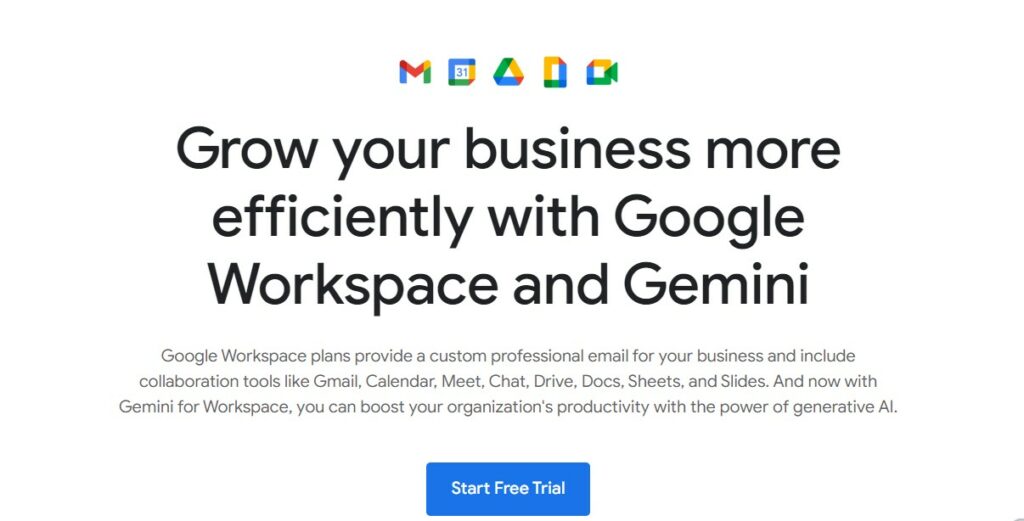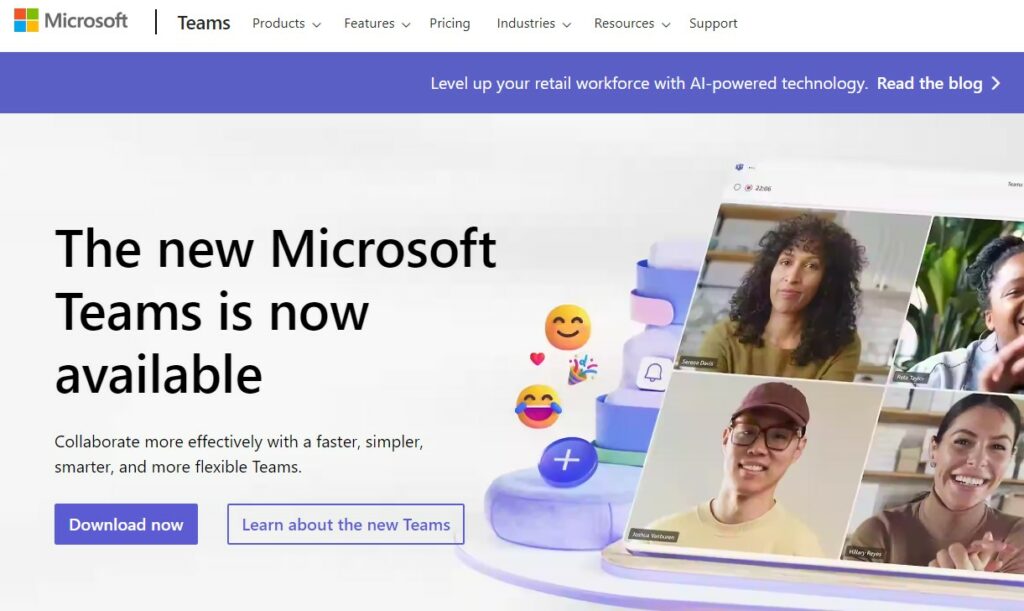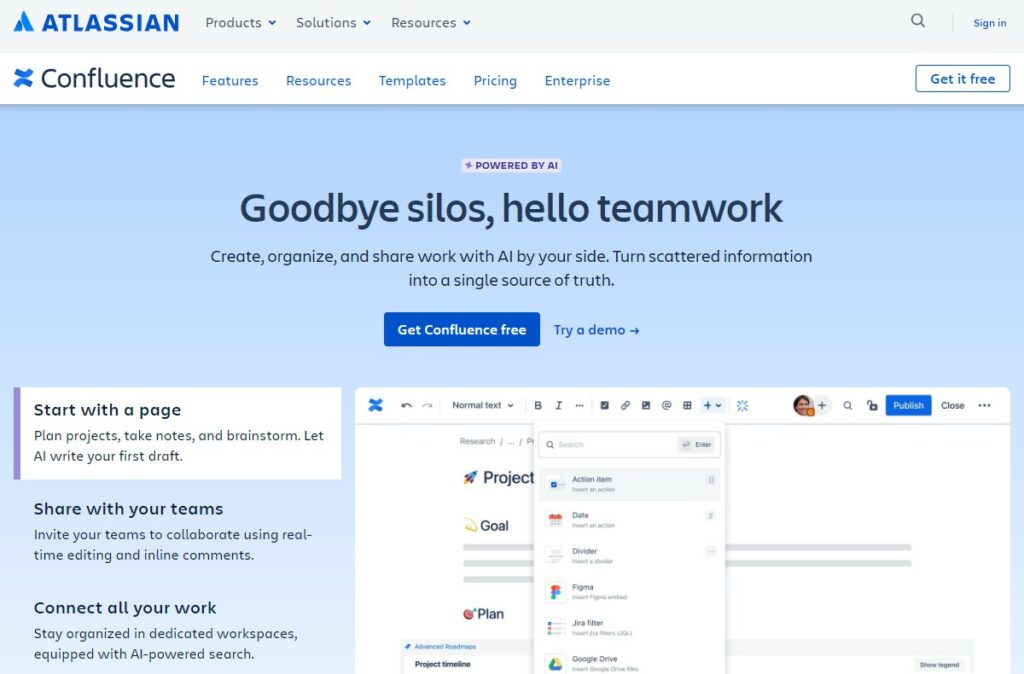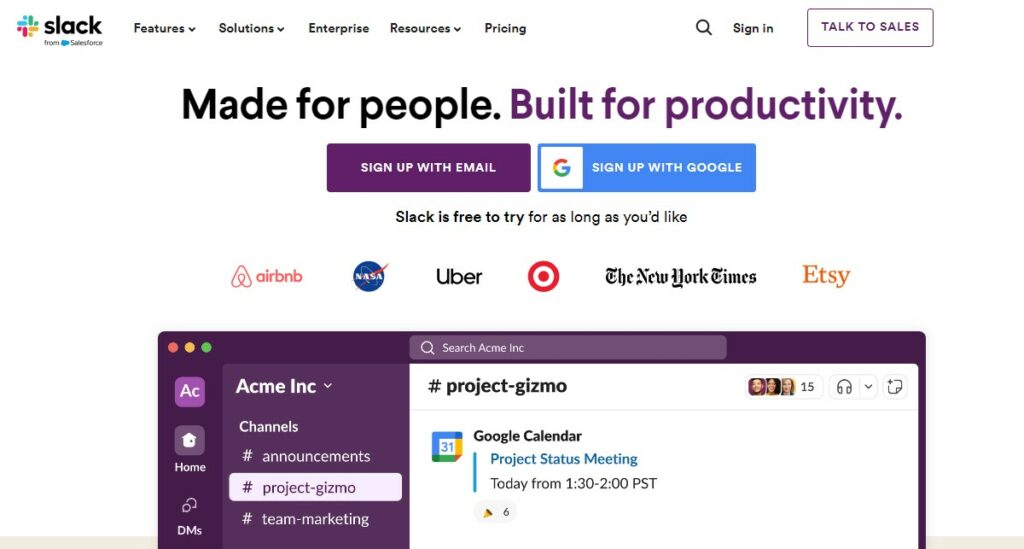In the bustling digital world, many businesses like yours rely on collaboration tools to keep their teams connected and processes streamlined and looking for SharePoint alternatives may seem like a daunting task.
Microsoft SharePoint has been a longstanding favorite, known for its robust features in document management and intranet solutions.
However, you may find that SharePoint isn’t quite the right fit for your business’s unique needs.
Perhaps it’s the interface, the pricing, or the requirement for customization that has you looking around.
With the market brimming with alternatives, you’re not short on options.
Some of the most distinguished SharePoint competitors include platforms like Google Workspace, which is renowned for its user-friendly design and collaborative tools.
Then there’s Atlassian’s Confluence, offering extensive integration potential, especially for software development projects.
And not to forget, other contenders like Huddle and Igloo provide niche solutions for team collaboration and knowledge sharing.
Choosing among these alternatives can be quite the task, but focusing on your business’s specific requirements can help you narrow down the field.
While each alternative offers its own set of features and benefits, the best choice for you is the one that aligns with your work processes and enhances your team’s productivity without blowing your budget.
Top SharePoint Alternatives
If you’re seeking tools for collaboration and project management, a variety of SharePoint alternatives offer distinct features that might better align with your team’s needs.
1. Google Workspace

Google Workspace provides a suite of collaboration tools that integrate seamlessly with one another.
You can expect real-time document editing, shared calendars, and communication via Gmail and Google Meet.
Key Features:
- Google Docs, Sheets, and Slides for collaboration
- Gmail for communication
- Google Drive for storage
2. Microsoft Teams

Microsoft Teams is a robust platform offering chat, video meetings, and file collaboration.
It is especially useful if you’re already using other Microsoft Office products.
Key Features:
- Integrated with Microsoft Office programs
- Chat and video conferencing capabilities
- Strong focus on collaboration and communication within teams
3. Confluence

Confluence, by Atlassian, is a content management and collaboration platform that excels in creating a knowledge base and document collaboration for technical and software development teams.
Key Features:
- Deep integration with Jira Software and Trello
- Page creation and editing with a rich text editor
- Mobile app synchronization for on-the-go access
4. Slack

Slack is a messaging app for teams that centralizes communication and integrates with a multitude of apps to streamline workflows and alert management.
Key Features:
- Organize conversations into channels
- Connect numerous third-party apps and services
- Voice and video calls within the platform
Evaluating Alternatives
When exploring SharePoint alternatives, it’s crucial for you to consider user experience, scalability, security, and cost.
These aspects will guide you to make an informed decision that aligns with your business needs.
User Experience
Your team’s productivity is heavily influenced by the ease with which they can navigate and use collaboration software.
FuseBase and Confluence are known for their intuitive interfaces, which may enhance your team’s ability to adapt quickly.
You’ll want to look for platforms that offer straightforward navigation and customization options that fit your team’s workflow.
Scalability
As your business grows, your chosen platform should be able to scale with you.
Cloud solutions like ClickUp and ONLYOFFICE Workspace offer flexibility and can typically scale easily with your user count and data needs.
On the other hand, some alternatives might require additional infrastructure investment for scaling up, which can affect long-term suitability.
Security Considerations
The security of your data is paramount.
When evaluating alternatives, check if they provide robust security measures like Huddle, which is known for secure collaboration.
Inspect their compliance certifications, encryption standards, and data backup policies.
Alfresco might also be a good option if you’re looking for a platform with strong document management and security protocols.
| Features | FuseBase | Alfresco | Huddle |
|---|---|---|---|
| Encryption | ✔️ | ✔️ | ✔️ |
| Compliance | ✔️ | ✔️ | |
| Access Control | ✔️ | ✔️ | ✔️ |
Cost Comparison
Your budget will significantly influence your choice.
Explore if the alternatives offer a transparent pricing model and whether they provide a good value for money.
Workzone, for instance, is rated highly in terms of value.
It’s essential to consider both upfront costs and potential future expenses as your usage escalates.
Remember to compare:
- Subscription tiers
- Additional feature costs
- Support and maintenance fees
Transitioning from SharePoint
When you decide to transition from SharePoint to another collaboration platform, it’s essential to focus on two major areas: how you’ll move your data and how you’ll get your team up to speed on the new system.
Data Migration Strategies
For a smooth data migration, you should begin with a detailed plan.
Start by identifying the data that needs to be transferred, categorize it, and prioritize it according to its importance and complexity.
Step-by-Step Data Migration Plan:
- Inventory Your Data: Assess and catalogue all your SharePoint data.
- Choose a Migration Tool: Pick a tool tailored to the destination platform.
- Conduct a Pilot Migration: Test the migration process to identify issues early.
- Execute the Migration: Move your data in stages, verifying integrity at each step.
Training and Support
Once migration is in progress or complete, it’s crucial to provide training and support to help your team adapt to the new system.
Quality training will reduce downtime and make for a more seamless transition.
Training Guidelines:
- Create Documentation: Develop user-friendly guides and resources.
- Schedule Training Sessions: Plan group or individual training based on roles.
- Collect Feedback: Use feedback to address gaps in knowledge and to improve training materials.
Future of Collaboration Tools
As you navigate the evolving landscape of collaboration software, it’s essential to stay informed about the latest trends and technologies.
This will help you choose tools that not only meet your current needs but also position your team for future success.
Emerging Trends
- Hybrid Work Environments: Collaboration tools are increasingly catering to hybrid work models, where you must seamlessly transition between on-site and remote work.
- User-Centric Design: You’ll notice a greater emphasis on intuitive user interfaces that reduce the learning curve, allowing you and your team to focus on productivity rather than on navigating complicated software.
- Open-source platforms: These options are gaining traction, providing you with customizable alternatives that can be tailored to your specific needs.
Integrating New Technologies
- Artificial Intelligence (AI): AI is becoming integral in smart scheduling, predictive typing, and data analysis to help you organize your workload more efficiently.
- Machine Learning (ML): ML algorithms are being integrated to personalize your experience, learning from your patterns to streamline your collaborative processes.
Key Takeaways
When considering alternatives to Microsoft SharePoint, you have multiple options that cater to diverse business needs.
- Google Workspace: Known for its robust storage offerings, affording up to 5 TB per user on its Business plan.
- It’s a comprehensive suite equipped with various apps for document creation, file sharing, and task management.
- Helpjuice: This platform specializes in knowledge management, helping organizations create and manage knowledge bases effectively.
- Workzone: It stands out for its high user ratings in categories such as functionality, ease of use, value for money, and customer support.
- ClickUp: Noteworthy for its versatility, which might appeal to teams looking for an all-in-one workspace.
- Confluence: A popular tool amongst development teams, offering a robust platform for collaboration and documentation.
Here’s a quick list for easy reference:
- Google Workspace: Document creation, storage, and collaboration
- Helpjuice: Knowledge management and information organization
- Workzone: User-friendly project management with comprehensive support
- ClickUp: Multifaceted tool for task tracking and project planning
- Confluence: Teamwork and documentation focused on devs and tech teams
These alternatives bring distinct features and benefits that may align more closely with your specific organizational requirements compared to Microsoft SharePoint.
Choose wisely based on your workflow demands, team size, budget, and desired functionality.

